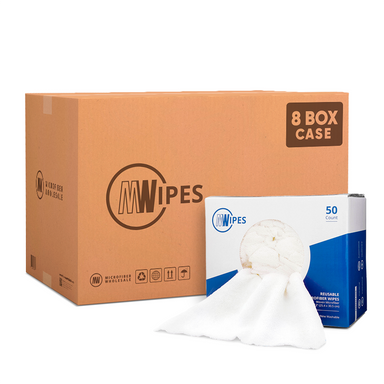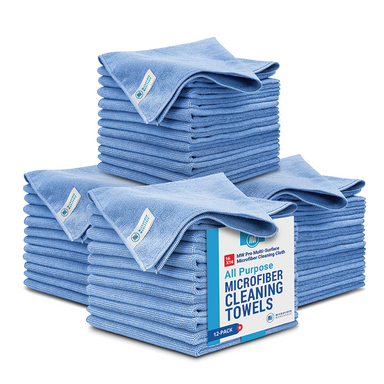Opt for a Different Type of Microfiber
The type of microfiber towel you use can have a big impact on how easy it is to clean. An extremely plush towel, like a professional-grade microfiber towel or one for auto detailing is the most effective option for cleaning, but will be more challenging to remove lint.
So, when it comes to cleaning areas that have more hair and lint, such as bathrooms, you might want to reach for something else. Here are three alternatives:
Microfiber With a Lower GSM
Microfiber is made with microscopic fibers, and just like your favorite cotton sheet set, their quality is determined by thread count — or GSM (grams per meter).
A great-quality towel is typically over 300GSM, like our MW Pro Towels. But, for many cleaning tasks, like the hairy bathroom floor, you can use a lower GSM, like our MWipes™ Reusable Microfiber Wipes (200GSM).
Waffle Weave Microfiber
Another type of microfiber towel that is an excellent option are Waffle Weave Microfiber Towels. Typically designed to be a kitchen drying towel, they're super absorbent and quick drying.
They're constructed with alternating indentations that create the waffle-like pattern, making them great for scrubbing. And the fibers are shorter and less plush than a standard microfiber towel, so hair and lint won't get trapped as easily.
Disposable Microfiber
The third great option to avoid hair and lint is to go with a disposable option, like our Mwipes™ Disposable Microfiber Cloths. You still get the superior cleaning power of microfiber, but won't have to worry about the hassle of rewashing them, since they are cheap enough for a one-time use.
While you may be tempted to reach for paper towels, they won't give your surfaces the deep clean they really need. Our disposable microfiber cloths are non-woven and non-linting, which means no hair or debris will get stuck, and they give a perfectly polished finish every time.

















